Welcome to Hygen & N-Gen Bradford Hydrogen
Production Facility consultation website.
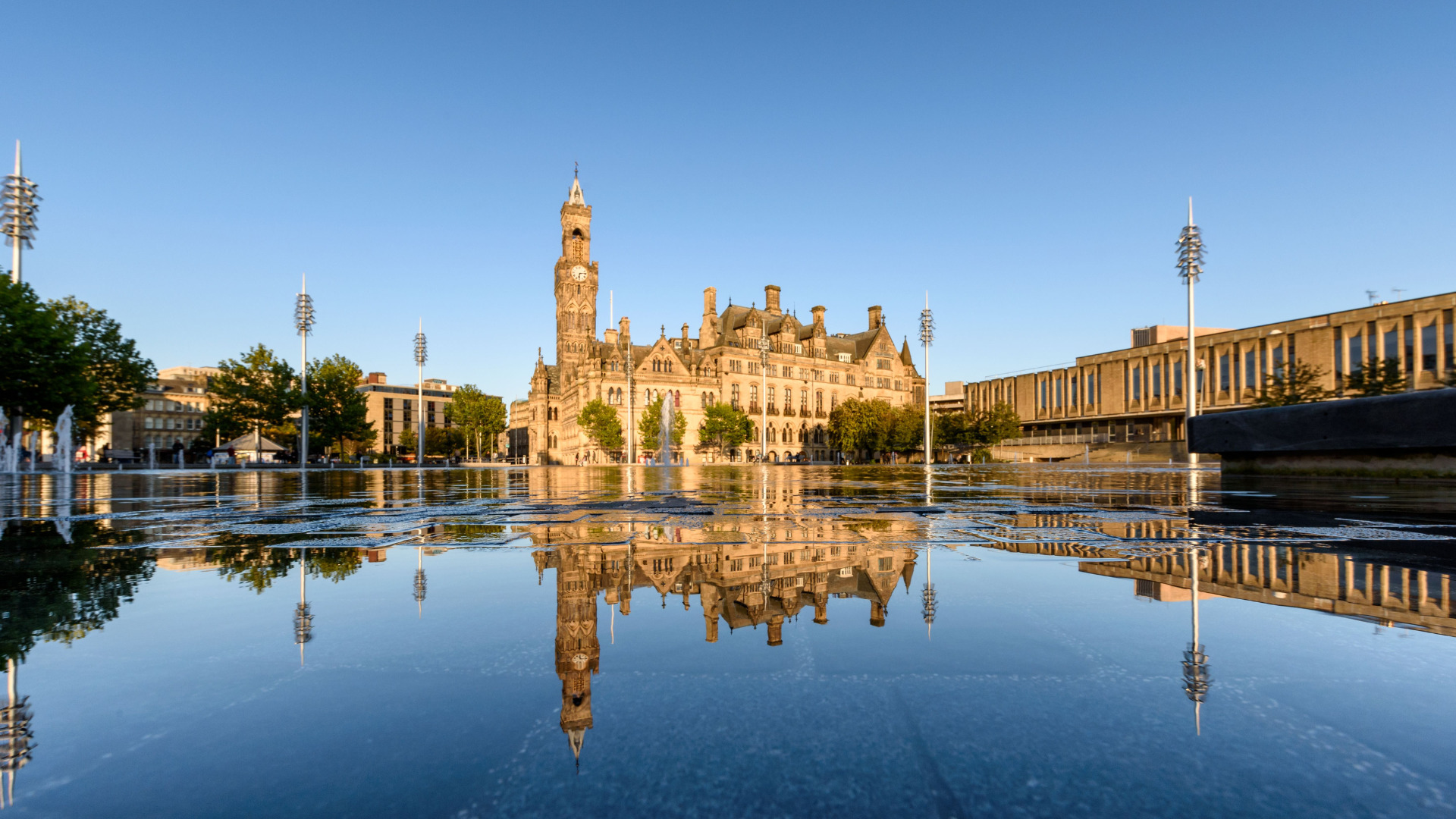
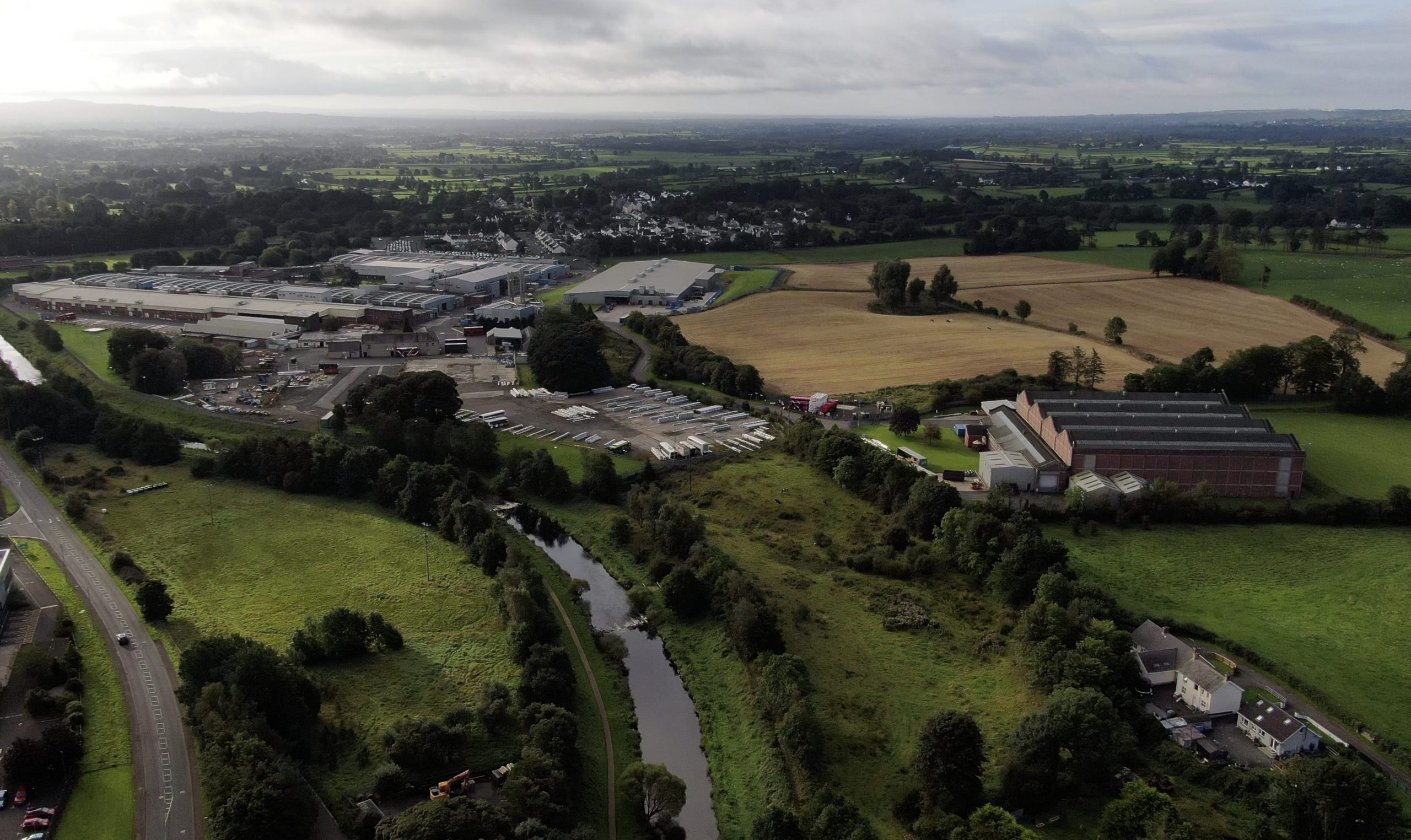
Welcome to Hygen & N-Gen Bradford Hydrogen
Production Facility consultation website.
Introduction
Welcome
Hygen and N-Gen are delighted to be working together to deliver a state-of-the-art low carbon hydrogen production facility in east Bradford, off Bowling Back Lane.
Once built, the facility will include a production facility to generate hydrogen from low carbon energy sources and a hydrogen and electric vehicle refuelling station for local buses and public and private sector fleets.
The refuelling facility will potentially be the UK’s first ever duel energy Zero Emission refuelling station catering for Battery Electric and Hydrogen Electric vehicles, benefitting the people of Bradford and the wider community.
Working together we will deliver one of the UK’s largest low carbon hydrogen production facilities.
Hygen are a company focused on building of low carbon hydrogen production sites. They are investing in developing more than 1GW of low-carbon hydrogen production projects across the UK. All of the projects Hygen deliver have an identified customer for a significant percentage of the hydrogen produced.
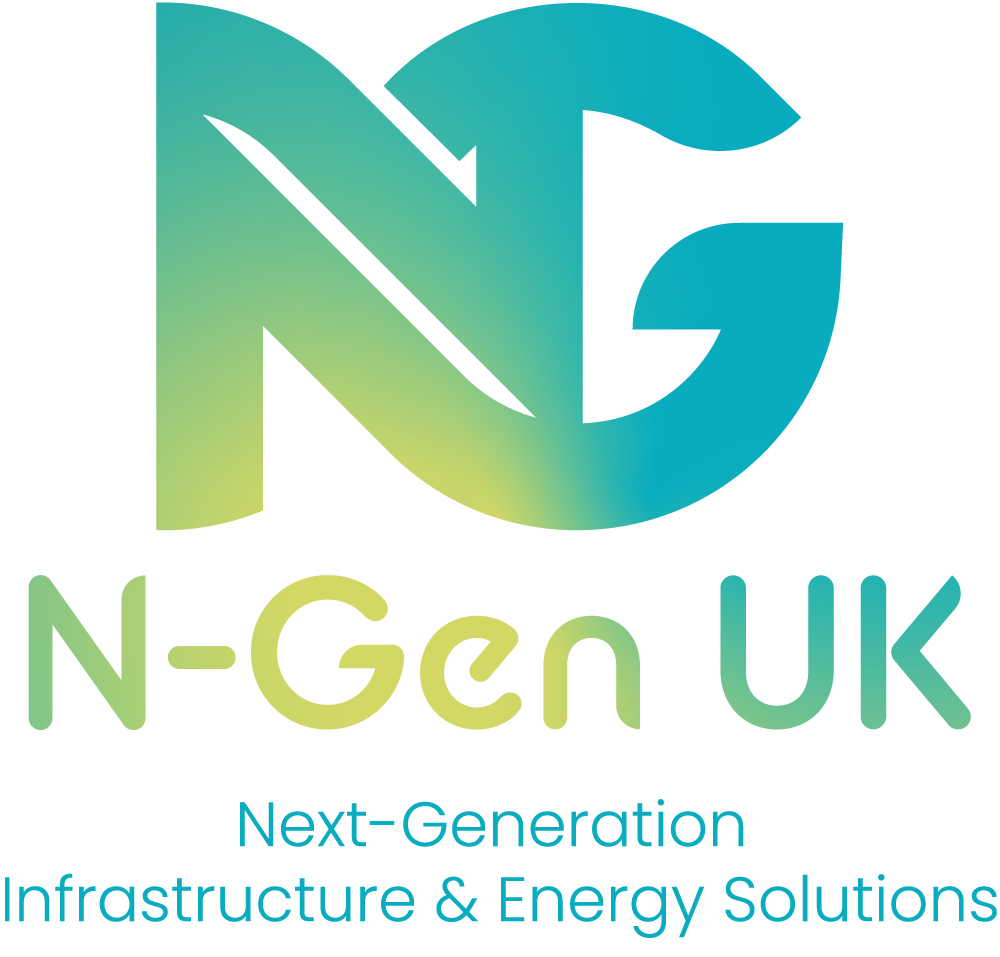
N-Gen are an energy developer who are committed to working with clients to identify and provide end to end energy solutions required for decarbonisation. Working across the upstream and midstream sectors, they aim to produce 75MW of green and low carbon hydrogen by 2025, along with all supporting infrastructure e.g. storage, pipelines etc.
- An opportunity to share the latest proposals with the community
- Gather community feedback and comments, including on future consultation and early project proposals
- Consult with you prior to submission of the formal planning application
- Answer your questions and identify issues most important to you
- Discuss the project benefits and potential community investment fund
We intend to submit a planning application for the green hydrogen production facility in 2023.
Quick Facts
30 jobs
Up to 30 jobs created during construction
~35,000 CO2
Saved annually per year compared to typical bus operation over the same distance
800 buses
Generate enough hydrogen every day to power all the buses in Bradford. The equivalent of removing 800 buses a day from West Yorkshire roads
£900 million
A UK-wide hydrogen economy could be worth £900 million and create over 9,000 high-quality jobs by 2030
10GW
UK gov will work with industry to meet its ambition for 10GW of low carbon hydrogen production capacity by 2030
We want to hear your feedback
As Hygen and N-Gen prepare a planning application for submission to Bradford Council, we are undertaking public consultation to inform local communities of our proposal and we welcome all comments and questions on our early plans.
Please provide any comments you have on the proposal via the email address below.
Comments provided by the local community will be taken into account in shaping the final planning application submission.
To share your views on the proposals and the use of hydrogen to support Bradford’s low carbon future, you can email us: enquiries@bradfordhydrogen.com

Consultation events
Hygen and N-Gen hosted two consultation events in September 2023 so members of the public and local residents and businesses could hear about the proposed Bradford Hydrogen Production Facility.

On Monday 11 September 2023 (3-7PM) the Hygen and N-Gen team hosted an event at The Vine Centre in Bradford for local residents.
On Tuesday 12 September 2023 (3-7PM) the Hygen and N-Gen team hosted an event for members of the public at The Ingus Hall, Kala Sangam in Bradford.
The site today
The two-hectare site is the former Northern Gas Networks gas holder site on Peace Street, adjacent to Bowling Back Lane. The gas holders have been decommissioned and this development offers the potential to bring the brownfield land on site back into use for the long term. The site is also close to two bus depots where Bowling Back Lane meets Wakefield Road. A hydrogen facility could support future bus fleets that operate from these locations.
The site is brownfield and mostly surrounded by other industrial development. There are some small areas of residential homes in the area and the team has given careful consideration to designing a scheme which is sensitive to where people live locally.
A comprehensive redevelopment is needed to bring this site back to use for the long term, maximising value to the area.
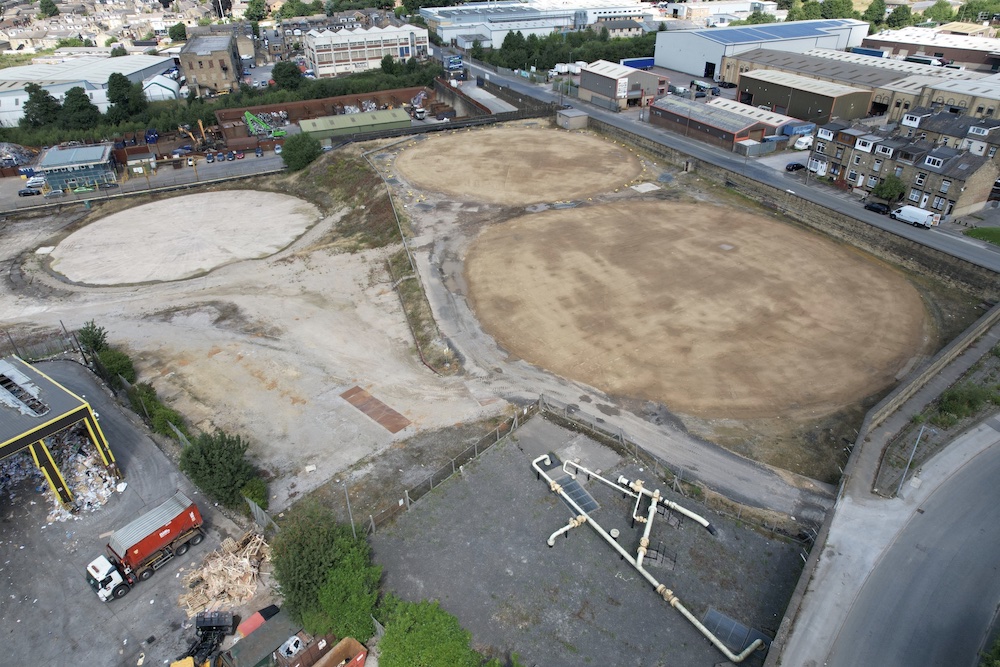

Hydrogen Production Business Model Funding
The Net Zero Hydrogen Fund is a subsidy provided by the Department for Energy Security and Net Zero which aims to support with the production cost difference between producing low carbon hydrogen compared to fossil fuels.
The purpose of the funding is to help kick start the hydrogen economy getting cost competitive supplies of hydrogen into the market.
The funding works as a subsidy on the hydrogen sold to customers to allow them to purchase hydrogen at the same price as natural gas. This will remove the economic decision between the cheapest option and the low carbon option.
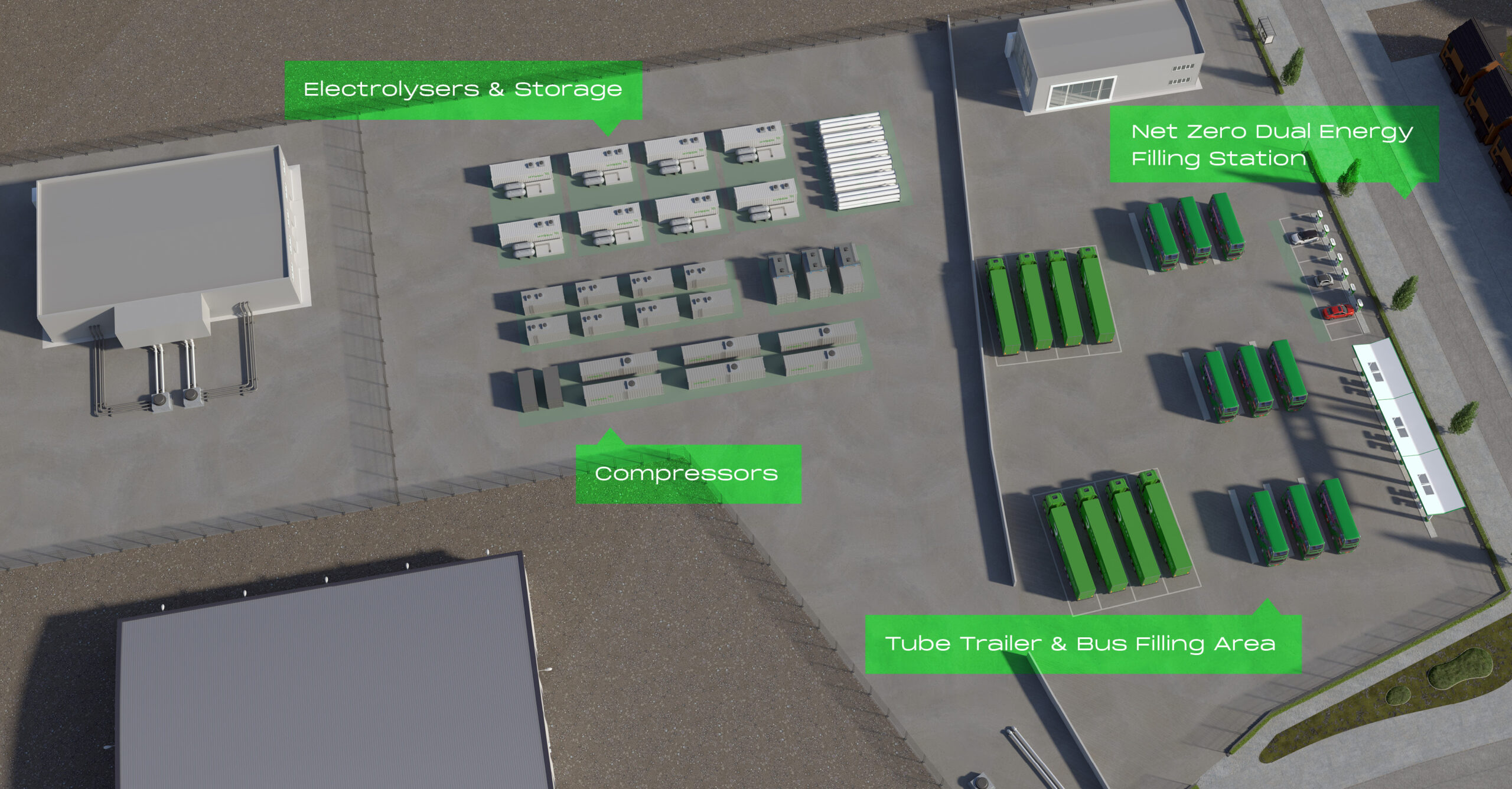
Proposed Development
The proposal comprises two key elements.
A hydrogen production facility:
- This will be located to the west of the site in an area that will be secured by fencing and monitored by CCTV.
- It may include a hydrogen gas turbine to provide power to the local grid in times of high demand.
- It is likely that production would be 24 hours a day and the facility will have capacity to generate approximately 16 tonnes of hydrogen per day – enough to power all the buses in Bradford.
A hydrogen and electric vehicle refuelling/recharge station:
- This facility will potentially be the UK’s first ever dual energy Zero Emission refuelling station catering for Battery Electric and Hydrogen Electric vehicles.
- It gives motorists in Bradford the choice of zero emission tech car purchasing: battery electric cars to charge in 30-60mins or hydrogen fuel cell cars to refill in 8 minutes with 30%-50% more range.
- This will be located at the east of the site for those requiring hydrogen for their vehicles.
- This can serve multiple hydrogen vehicles at any one time.
- Entry to the site will be from Peace Street and the exit will be at Planetrees Road.
- The refuelling facility would be operational 24/7 though bus refuelling will happen overnight.
The hydrogen production facility will be made up of a series of equipment including:
- Electrolysers, in which the water is split into oxygen and hydrogen
- Compressors, to take the low-pressure hydrogen produced and compress into a higher-pressure gas for use in the fuel cell electric buses and other uses
- Filling stations where hydrogen tube trailers can be filled with compressed hydrogen gas to transport to different locations
- Electrical equipment including transformers and switchboards to power the equipment
- Remaining balance of plant required for safety and operations such as water management units, processing of the hydrogen into a usable form.
How it will look?
The site will incorporate a series of equipment to produce low carbon hydrogen, and will include:
- Electrolysers, in which the water is split into oxygen and hydrogen
- Compressors, to take the low-pressure hydrogen produced and compress into a higher-pressure gas for use in the fuel cell electric buses and other uses
- Filling stations where hydrogen tube trailers can be filled with compressed hydrogen gas to transport to different locations
- Electrical equipment including transformers and switchboards to power the equipment
- Remaining balance of plant required for safety and operations such as water management units, processing of the hydrogen into a usable form.
When the planning application for the project is submitted to Bradford Council, the Council’s planning department will thoroughly consider all aspects of the proposal and supporting information provided to ensure it complies with safety and policy requirements. Statutory bodies will also be consulted as part of the planning process on topics such as noise, traffic and environmental health. All necessary permits for the processes on site will be acquired alongside the planning consent.



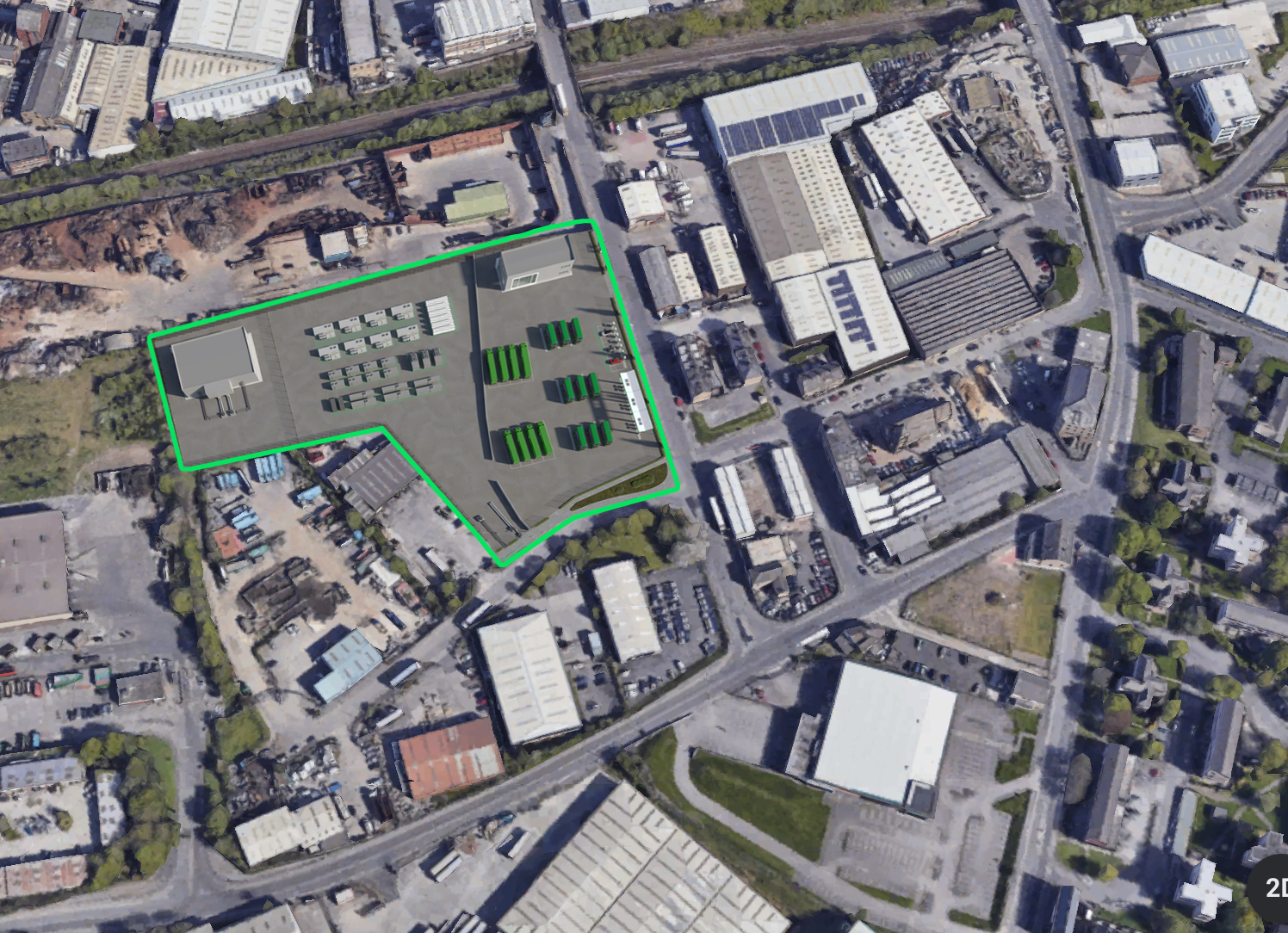
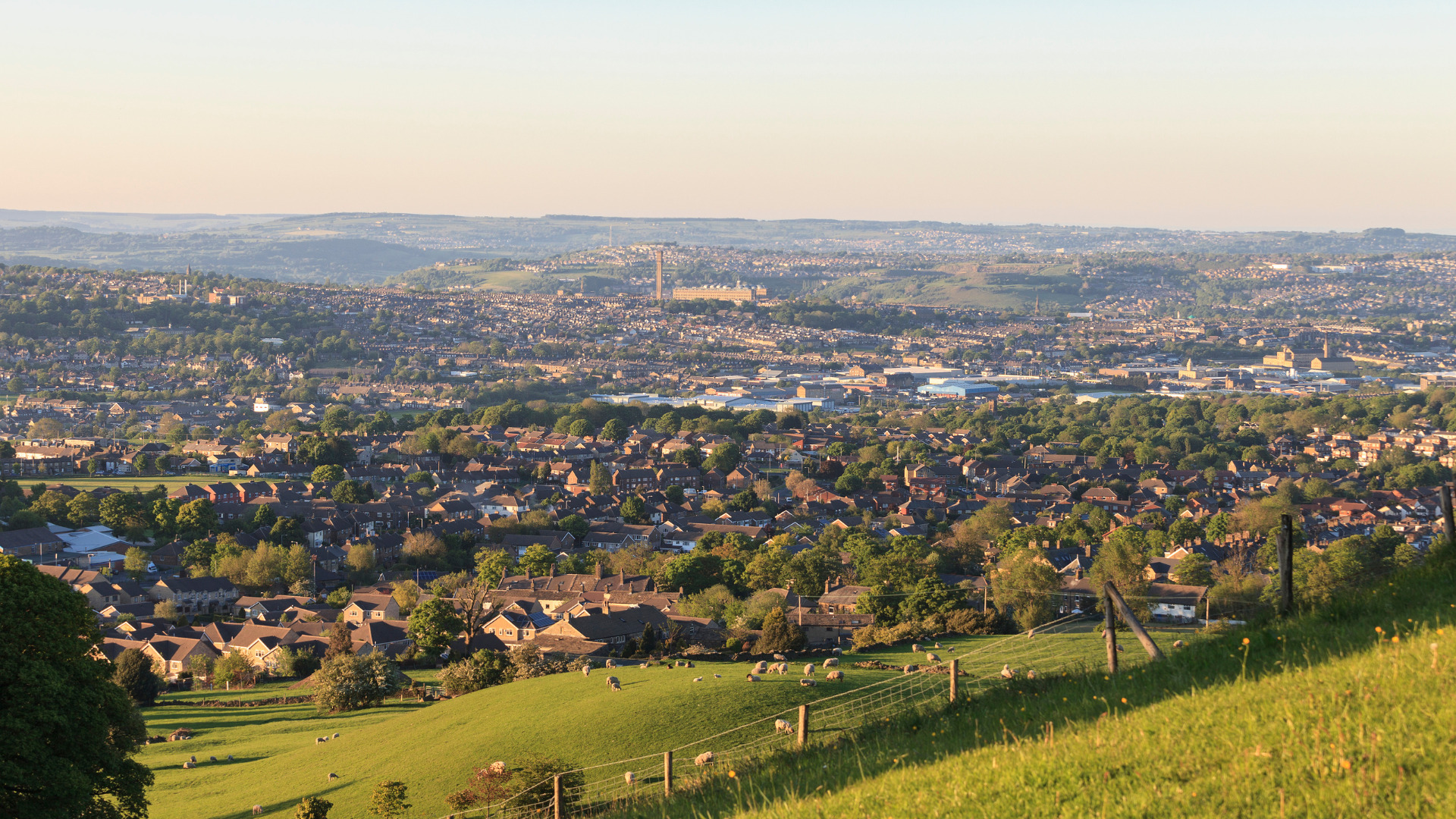
Project timeline
01
Consultation
September 2023
02
Planning Submission
Autumn 2023
03
Anticipated Decision
Spring 2024
04
Construction Begins
Autumn 2024
05
Operational
2025
Dates are estimates as of September 2023 and may change.
Hydrogen
In June 2019 the Government raised the UK’s ambition on tackling climate change by legislating for a net-zero greenhouse gas emissions target for the whole economy by 2050. Decarbonising the energy sector is integral to achieving this goal and requires major investment in a variety of technologies, including hydrogen. The UK government has committed to a target of 10GW of low carbon hydrogen by 2030 to which this project will contribute.
Hydrogen is made from the splitting of water into oxygen and hydrogen. It can be used as a method of utilising low carbon energy at times where generation is high but demand in the area is low, maximising the use of energy.
Hydrogen can also be used to replace carbon emitting fuels such a diesel and natural gas. Low carbon hydrogen, such as the type that will be produced at the Bradford Hydrogen Production Facility, can be used in the transport industry, for example to support vehicles undertaking longer routes, that can’t be easily supported using batteries. The waste product from the use of hydrogen is water meaning in residential areas emissions will be lower than the existing diesel buses on the road.
Why it is needed in Bradford
Bradford Council declared a climate emergency in January 2019 and are committed to becoming a net zero organisation by 2038, working with partners to reduce the District’s green house gas emissions.
In March 2020 Bradford Council published their Sustainable Development Action Plan which commits to embracing the opportunities offered by hydrogen, among many other plans to improve the green infrastructure in the city.
The Bradford Hydrogen Production Facility is close to two bus depots where Bowling Back Lane meets Wakefield Road. A hydrogen facility could support future bus fleets that operate from these locations and help Bradford’s local transport be as green as possible.
The measures Bradford is putting in place are in line with the UN’s Sustainable Development Goals and will cut carbon and costs, help to generate new jobs and sustainable economic growth through investment in a green economy. Research undertaken by Leeds City Region suggests that clean growth could add £11bn to the city region economy and create 100,000 extra skilled jobs for local people.

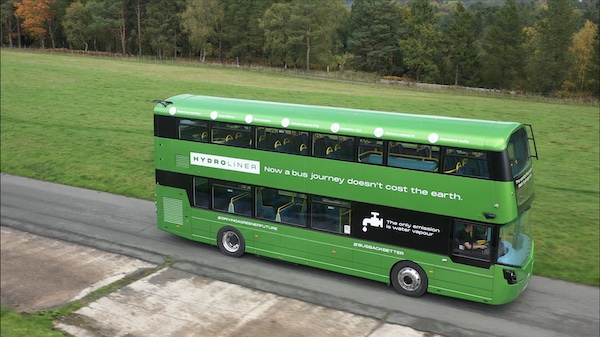
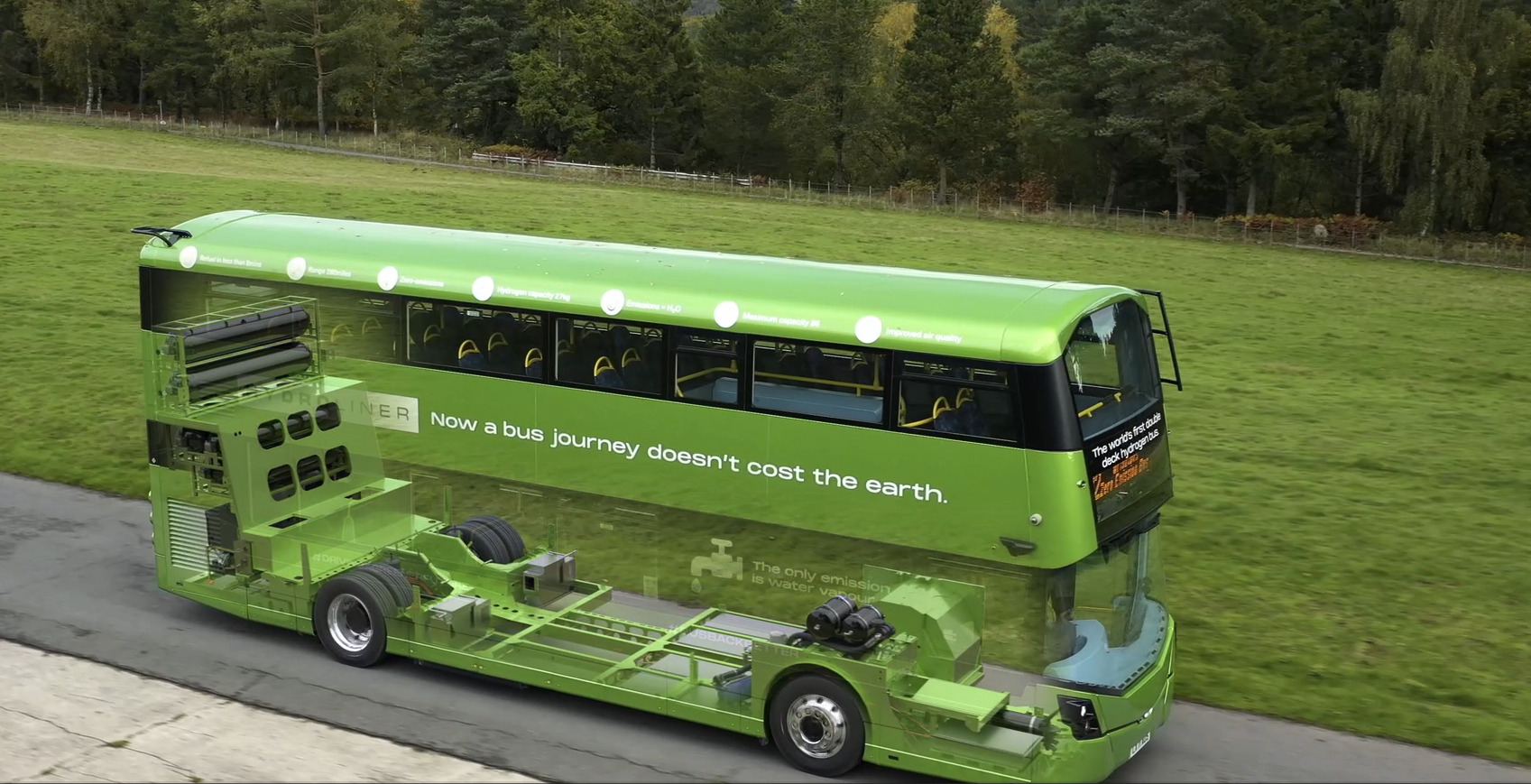
FAQs
Government analysis suggests that 20-35% of the UK’s energy consumption by 2050 could be hydrogen-based, supporting the country to meet its targets of net zero emissions by 2050 and cutting emissions by 78% by 2035 – a view endorsed by the UK’s independent Climate Change Committee *. Hydrogen will significantly assist by:
- Decarbonising transport sector such as buses and possibly HGVs.
- Decarbonising the heating system with blending on the network.
- Maximising the use of renewables so there is no curtailed output, and all renewables are converted into energy that can be used to decarbonise the UK.
*www.gov.uk
The hydrogen revolution brings with it significant supply chain and employment benefits throughout the whole planning, development, construction and operational cycle of a project’s life. In 2021 the UK Government announced plans to kick start world-leading hydrogen economy, supporting over 9,000 UK jobs and unlocking £4 billion investment by 2030.
Hydrogen is a class 3 gas and does have an explosion risk. However, it has been handled and produced for many years and there are numerous safety measures put in place to ensure that any risk is low and if any failures do occur that all locals and personnel are kept safe.
- Hydrogen allows you to maximise the use of electricity, renewables are intermittent and do not tend to line up with the time where demand is highest. Hydrogen allows renewables to be used and then the power used later – it’s a way of storing electricity.
- There are some use cases where batteries are not ideal – these tend to be long distance journeys and where there is not time for long recharging. Examples of these are buses and machines on construction sites or quarries so hydrogen is a good use case here.
- Hydrogen can also be transported around to be used in areas where there is not a large capacity for new electricity connection which would make batteries hard to recharge.
Hydrogen is a non-toxic fuel and does not pose a health risk. The by-product in the production of hydrogen is oxygen which is released to atmosphere and wastewater that is not used in the process which can be returned to the local wastewater system. When used as a fuel the cell releases water which is a reduction in harmful emissions compared to a diesel bus.
Hydrogen plants have some noisy equipment such as transformers and noisy compressors however they will not exceed noise level restrictions. Any equipment that could affect residents will be protected with acoustic barriers to limit noise levels in the surrounding area.
